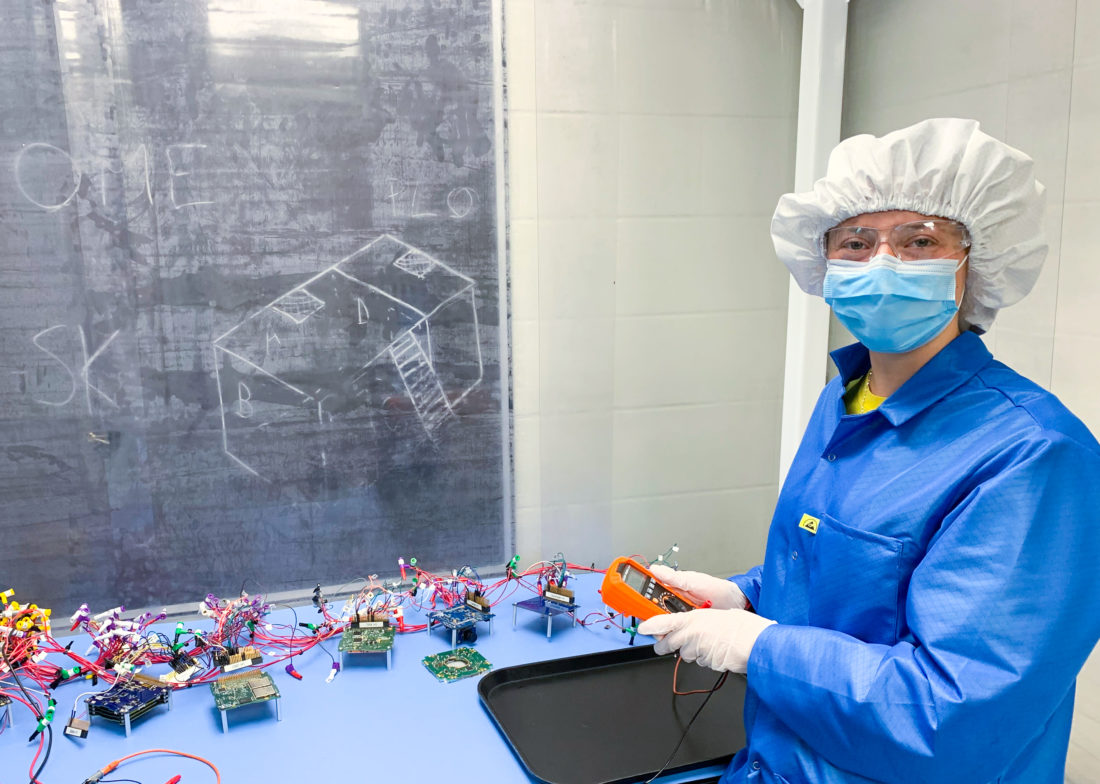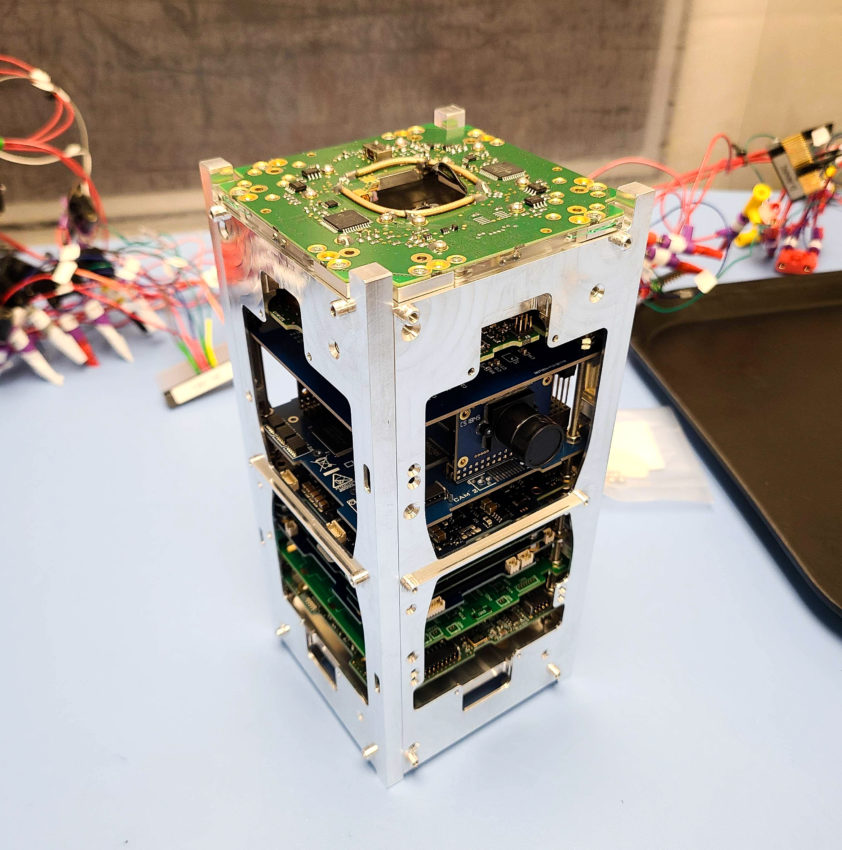
The University of Saskatchewan Space Design Team has reached a significant milestone in its effort to send Saskatchewan’s first satellite to space through the RADSAT-SK project. The Sheaf spoke with members of the USST to discuss the project, which was launched in 2018.
The RADSAT-SK project is funded through the Canadian Space Agency’s CubeSat Project, which provides post-secondary students with the opportunity to engage in a real space mission.
The satellite is around the size of a tissue box and will be launched and deployed from the International Space Station later this year where it will begin its one-year voyage.
More than 100 students and faculty from the College of Engineering and Saskatchewan Polytechnic have been designing and constructing the satellite for the past four years, but the COVID-19 pandemic has greatly impeded their progress.
Addi Amaya, the satellite’s software team lead, says that team members are enthusiastic about the next phase of the project now that they have physical access to campus and can put their designs into action.
“We get to test one component with another and see if it’s working like it is supposed to,” Amaya said. “It gives us confidence that once we launch [the satellite] from the ISS, it’s going to work.”
The satellite will test a new type of radiation dosimeter — a device used to measure exposure to ionizing radiation — and high-concentration melanin as a radiation shield, both developed by researchers from the College of Engineering. The satellite will also be used to capture images of Saskatchewan from space.

Arliss Sidloski, a second-year mechanical engineering student and systems lead for the project, explained that each component of the satellite is tested individually, ensuring that they function correctly before integrating the components to form a unified product.
To protect the hardware and avoid contamination during testing, the components are tested in a cleanroom that the team designed and constructed in the Hardy Lab of the Engineering Building. It is the only room in the building that is capable of housing the satellite.
Rhys Rybchuk, a second-year mechanical engineering student and systems member, says that the project has been difficult and complex, but that team members appreciate how the challenges they encounter relate to their studies.
“It’s been a really cool learning experience,” said Rybchuk, who explained that much of the terminology and theory behind designing the satellite has since come up in some of his classes.
Colby Valmont, a second-year mechanical engineering student and a systems member, echoed Ribchuk’s thoughts, explaining that the project has been beneficial to him as there has been substantial overlap between the project and his major.
“Most of us have design classes where we partake in designing some sort of product, and often that requires lots of organization and teamwork,” Valmont said. “Those types of skills transfer very well to our project.
Valmont told the Sheaf that teamwork is what has made the project such a success.
“It’s all about teamwork and helping others out, trying to be a leader, trying to learn as much as you can. I think that’s what the USST is all about.”
Layne Ransom, a second-year mechanical engineering student and human resources manager for the project, says that while designing the satellite is a huge commitment, the dedication of those involved is what makes the project so rewarding.
“Everyone on the team is extremely passionate about space design and engineering design in general,” Ransom said. “Some of them are the most intelligent people I’ve ever had the pleasure of working with. So, just having that kind of group and awesome people to work with makes it all worth it.”
The team will continue to reach for the stars as they fine-tune their satellite, which is expected to launch later this year.
—
Ben Kmiech
Photos: Supplied by Layne Ransom